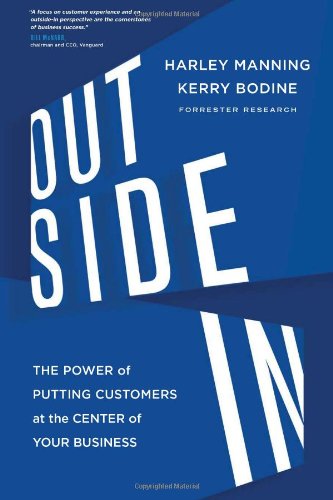Guest Post by Amy Willard of the Oracle Documentation Team
The Release 8 Oracle Fusion Technology library has been published. The library is now an integral part of the Oracle Fusion Applications Documentation Library. To access the library, go to http://www.oracle.com/technetwork/documentation/fusion-apps-doc-1508435.html, select the “Oracle Fusion Applications 11g Release 8 (11.1.8)” link, and then click the “Technology” tab.
Each book in the library contains a “What’s New” chapter that describes new and changed features and other significant changes in the release. The chapter is the first in every book.
Summaries of the Release 8 changes are the following:
Oracle Fusion Applications Installation Guide
This book has been expanded and restructured. In addition to new introduction and new overview chapters, several existing chapters have been updated. Detailed information about how to plan for an installation has been added, and the Oracle Fusion Applications Installation Workbook (in Microsoft Excel format) has been created as a companion to the guide. Architects, system engineers, and implementers can use the workbook to plan and record all the details for an environment installation (such as server names, URLs, port numbers, installation paths, and so on).
The book now contains extensive information about how to install and provision Oracle Identity Management and its associated databases, and how to troubleshoot these installations.
Finally, the guide now includes all content from the Oracle Fusion Applications Post-Installation Guide, which has been retired.
Oracle Fusion Applications Patching Guide
The Maintenance Mode feature has been added. Maintenance Mode allows a controlled access for applying patches. Information is still available to users in read-only mode, and transactions are disabled.
Oracle Fusion Applications Upgrade Guide
The upgrade process was changed so that steps are now run to check system reliability in pre-downtime mode after all prerequisites have been met. In addition, an automated upgrade to the Oracle Identity Management database is available if the environment meets specific requirements.
Oracle Fusion Applications Developer’s Guide
A new “Implementing Audit Reports” chapter has been added. The Attachments chapter has been updated with new methods and elements, and a new section describing the Attachments Carousel has been added.
A number of changes have been made to Flexfield information, including the Extensible Flexfield Registration Metadata Wizard; enabling extensible flexfields for business intelligence; the ability to protect value sets, descriptive flexfields, and extensible flexfield pages and contexts from end-user configuration; and the custom FlexfieldsDeploymentServiceJob Oracle Enterprise Scheduler job, which enables you to programmatically deploy a flexfield.
In addition, the user interface provided by the UI Shell has been updated, and the new format for the fusion_apps_wls.properties file is explained.
Oracle Fusion Applications Extensibility Guide for Developers
The book now contains information about the new skyros skin extension and the ability to customize task flows in Oracle BPM Worklist. In addition, a chapter explaining how to modify the Oracle Business Intelligence repository (RPD) to support Oracle Fusion Applications analyses and report customizations has been added.
Oracle Fusion Applications Administrator’s Guide
The security chapter has been entirely rewritten, and a number of feature enhancements and bug fixes have been added. The number of links to external references has been reduced, in some cases, content was migrated to this book to eliminate the need for the links.
Oracle Fusion Applications Installing and Managing in an Oracle VM Environment
The book has been updated to reflect the most recent changes in deployment properties.
Oracle Fusion Applications Enterprise Deployment Guide for Customer Relationship Management
Oracle Fusion Applications Enterprise Deployment Guide for Financials
Topology diagrams have been updated to reflect the changes made in this release, and existing database host requirements have been enhanced. The “Scaling Out Oracle HTTP Server” chapter has been restructured, and all associated screen shots have been updated to reflect changes made in this release.
For installing components for an enterprise deployment using the Provisioning process, screen shots have been updated to reflect changes made in Release 8. In addition, the faststartstop.sh script now contains more options. For Oracle Business Intelligence scale out, file-based persistence has been replaced with Java Database Connectivity (JDBC) persistence. For Oracle SOA Suite scale out, information about switching Oracle User Messaging Service to use Oracle Advanced Queuing (AQ-JMS) has been added, and instructions for creating and configuring JMS servers and JDBC stores has been revised.
In addition, the “Configuring Oracle Business Intelligence Applications” chapter has been removed from both books. Topics covered in this chapter can be found in Oracle Business Intelligence Applications Installation Guide 11g Release 1 (11.1.1.8.0).




![image[7][2][2][2] image[7][2][2][2]](http://soacommunity.files.wordpress.com/2013/04/image7222.png?w=20&h=20&h=20)
![clip_image002[8][4][2][2][2] clip_image002[8][4][2][2][2]](http://soacommunity.files.wordpress.com/2013/04/clip_image00284222.jpg?w=26&h=23&h=23)




 Phil Hunt is an active member of multiple industry standards groups and committees (see brief bio at the end of the post) and has spearheaded discussions, creation and ratifications of industry standards including the Kantara Identity Governance Framework, among others. Being an active voice in the industry standards development world, we have invited him to share his discussions, thoughts, news & updates, and discuss use cases, implementation success stories (and even failures) around industry standards on this monthly column.
Phil Hunt is an active member of multiple industry standards groups and committees (see brief bio at the end of the post) and has spearheaded discussions, creation and ratifications of industry standards including the Kantara Identity Governance Framework, among others. Being an active voice in the industry standards development world, we have invited him to share his discussions, thoughts, news & updates, and discuss use cases, implementation success stories (and even failures) around industry standards on this monthly column.













